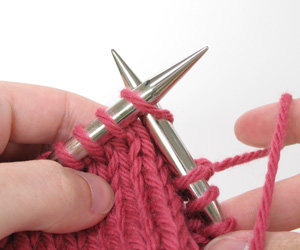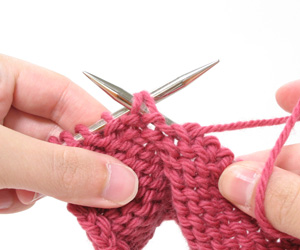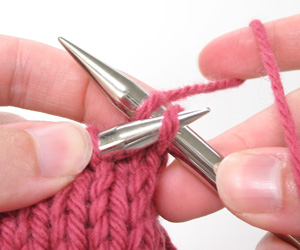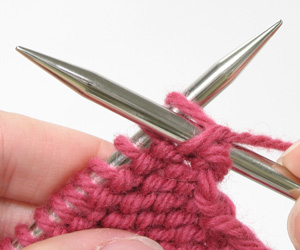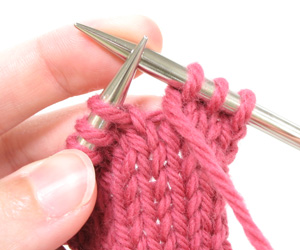” Single quotes are used to abbreviate the word inch or inches. 4” is equal to 4 inches.
* When you encounter a single asterisk, you will repeat the directions that follow the * as is indicated at the end of the line of instructions.
* * When you encounter a set of asterisk’s surrounding a portion of instructions, you will repeat the instructions between the * * as many times as is indicated directly after them.
( ) When you encounter parentheses, you will repeat the instructions between the ( ) as many times as is indicated directly after them.
[ ] When you encounter brackets, you will repeat the instructions between the [ ] as many times as is indicated directly after them.
alt is an abbreviation for alternate.
approx is an abbreviation for approximately.
beg is an abbreviation for begin or beginning.
bet is an abbreviation for between.
BO is an abbreviation for bind off.
CC is an abbreviation for contrast color.
cm is an abbreviation for centimeter or centimeters.
cn is an abbreviation for cable needle.
CO is an abbreviation for cast on.
cont is an abbreviation for continue.
dec is an abbreviation for decrease or decreases. For instructions, visit the Decrease category.
dpn and dpns are abbreviations for double point(ed) needle or needles.
fl is an abbreviation for front loop or front loops.
foll is an abbreviation for follow, follows, or following.
frogging is the act of unraveling or tearing out knitting.
Garter stitch fabric is created when you knit every single row. The result is a ridged surface. For more information please see the Garter entry in the Stitch Patterns topic.
inst is an abbreviation for instruction or instructions.
K or k are common abbreviations for knit. If you would like more information about making a knit stitch, please click on the Knitting 101 category.
k2tog is an abbreviation for knit two together. See the Decrease topic for further instructions.
ktbl is an abbreviation for knit through back loop. For this instruction, you will pass your right needle through the back side of the next stitch from right to left. You will then complete the knit stitch as usual.
kwise is an abbreviation for knitwise.This is less of a technique and more of a direction. It just indicates the side from which you will hold your needle ready to attack. The front of your fabric is the side where any action will happen knitwise. If your instructions (or the voices in your head) tell you to do something knitwise, then you will insert your right needle tip into the next stitch as if you were going to complete a knit stitch.
LH is an abbreviation for left hand or lefthand.
lp or lps are abbreviations for loop or loops.
m is an abbreviation for meter.
M1 and m1 are abbreviations for make one stitch. For more information visit the Increase topic.
MC is an abbreviation for main color.
mm is an abbreviation for millimeter.
ndl or ndl(s) are abbreviations for needle or needles.
oz is an abbreviation for ounce.
P up is an abbreviation for pick up and purl.
P and p are abbreviations for purl.
p2tog is an abbreviation for purl two together. It involves purling two stitches together as though they were one stitch. Completing a p2tog creates a decrease in your knitting because where once there were two stitches; there is now only one stitch. This decrease slants to the right. If you are decreasing evenly on both sides of your fabric to create a point (such as the top of a mitten) or shaping armholes, you would want to use this on the left hand side of the front of the garment. On the right hand side you would use a left slanting decrease.Insert right needle through 2 stitches at once from right to left and complete purl stitch as usual.
pat and patt are abbreviations for pattern.
pm is an abbreviation for place marker.
pop is an abbreviation for popcorn.
pr is an abbreviation for previous row or previous round.
prev is an abbreviation for previous.
psso is an abbreviation for pass slipped stitch over. This action is usually taken after you have slipped a stitch and then worked one or more stitches following that slipped stitch. You will then pass the slipped stitch(es) over the stitch(es) to the left and off of the tip of the right needle. Passing slipped stitches over creates a left slanting decrease in your work.As an example, we will consider the following sample instructions: sl st, k1, psso.
After you have slipped one stitch from the left needle to the right needle and knit one stitch to follow it, you will be ready to pass the slipped stitch over. Simply insert your left needle tip into the slipped stitch from left to right.
Using your left needle tip, lift that stitch up and over the stitch to the left of it and off of the right needle. Extract your left needle tip if it is still in the stitch.
ptbl is an abbreviation for purl through back loop.
For this instruction, you will pass your right needle through the back side of the next stitch from left to right. You will then complete the purl stitch as usual.
pwise is an abbreviation for purlwise. This is less of a technique and more of a direction. It just indicates the side from which you will hold your needle ready to attack. In this case, you will be approaching from back to front, as you do when purling a stitch.
The back side of your fabric is the side where any action will happen purlwise. If your instructions (or the voices in your head) tell you to do something purlwise, then you will simply insert your right needle tip into the next stitch as if you were going to complete a purl stitch.
R and r are abbreviations for row.
rem is an abbreviation for remain or remaining.
rep is an abbreviation for repeat.
Rev st st is an abbreviation for reverse stockinette stitch.
Reverse stockinette fabric is created by beginning with a purl row and then alternating knit and purl rows.
RH is an abbreviation for right hand or righthand.
rnd and rnds are abbreviations for round and rounds.
RS is an abbreviation for right side. This indicates the side of your knitting that will face outward when the project is complete.
sk is an abbreviation for skip.
sk2p is an abbreviation for slip, k2tog, psso.
skp is an abbreviation for slip, knit, pass slipped stitch over. See the Decrease topic for further instructions.
sl is an abbreviation for slip.
sl st is an abbreviation for slip(ped) stitch. Slipping a stitch means to move it from the left needle to the right without working it. A stitch may be slipped knitwise or purlwise. If the directions do not specify, the default direction is purlwise.
Insert right needle through next stitch as if to purl.
Slip stitch off of left needle.
sl1k is an abbreviation for slip one knitwise. This means you will insert your right needle into the next stitch as if to knit it, but then you will slip it off of the left needle without working it at all.
sl1p is an abbreviation for slip one purlwise. This means you will insert your right needle into the next stitch as if to purl it, but then you will slip it off of the left needle without working it at all.
ssk is an abbreviation for slip, slip, knit. See the Decrease topic for further instructions.
sssk is an abbreviation for slip, slip, slip, knit. This is executed in the same way as the ssk. The only difference is that you slip a third stitch before you complete the knit. Completing a sssk creates a double decrease that leans to the left.
St st is shorthand for Stockinette stitch. For more information see the Stockinette entry under the Stitch Patterns topic.
st and sts are abbreviations for stitch and stitches.
tbl is an abbreviation for through back loop. See ktbl or ptbl for more information.
tfl is an abbreviation for through front loop.
tog is an abbreviation for together.
WE is an abbreviation for work even.
WS is an abbreviation for wrong side. This is standard terminology for the side of the project that will face inward or may not be seen. On a sweater, it would be the interior. On a bedspread, it would be the side that faces down towards the bed.
wyib is an abbreviation for with yarn in back. When you see this direction, you will want to have your working yarn hanging down the backside of your knitting, as it does when you are making knit stitches.
wyif is an abbreviation for with yarn in front. When you see this direction, you will want to have your working yarn hanging down the front of your knitting, as it does when you are making purl stitches.
ybk is an abbreviation for yarn back. When you see this instruction, you will want to bring your working yarn from the front of the work to the back, making sure that it passes under the needle tips. See wyib for an illustration.
yd and yds are common abbreviations for yard and yards. When a pattern calls for approx 5 yds of waste yarn, it means you will need approximately five yards of waste yarn to complete the instructions.
yfwd is an abbreviation for yarn forward. When you see this instruction, you will want to bring your working yarn from the back of the work to the front, making sure that it passes under the needle tips. It’s as simple as that! See wyif for an illustration.
yo is an abbreviation for yarn over. To complete a yarn over, you will bring your yarn from back to front (if it was initially in the back) or from front to back (if it was initially in the front) under the needle tips. After doing so, you will continue to knit as the pattern indicates. If you were working knit stitches, for example, you will see that when you bring your yarn to the front and complete the next knit stitch, an extra strand of yarn will now lie over the needle. This is the result of the yarn over.
yon is an abbreviation for yarn over needle. This is conducted by passing the yarn from the back of the work to the front (or from the front to the back) and laying it across the top of the needle as opposed to between/under the needle tips as in a yarn forward.
yrn is an abbreviation for yarn around needle. This is completed the same way as a yarn over (yo).



